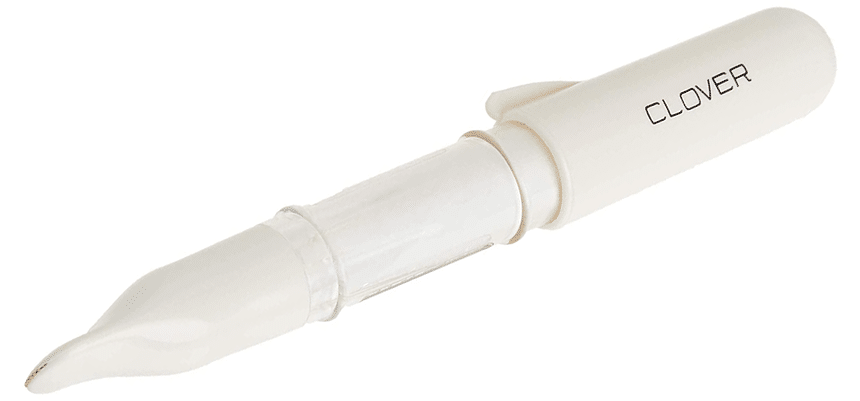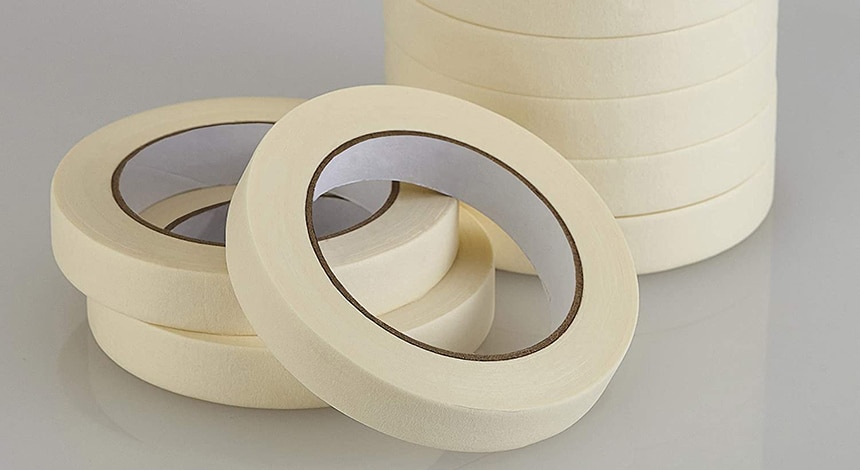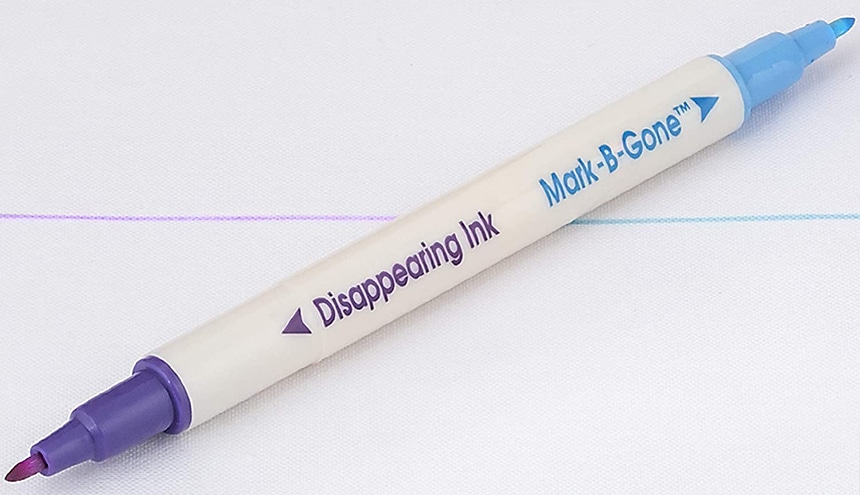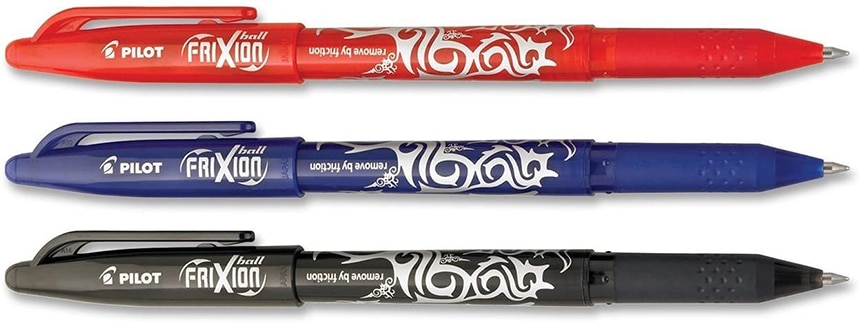

One of the joys of quilting is choosing a project with several patterns. You find yourself so deeply immersed in an activity you love that you don’t notice the passing of time. It’s no wonder that the quilting market is now worth $4.2 Bn Trusted Source Quilt Market Forecast, Trend Analysis & Opportunity Assessment 2020-2030 Quilt Market Report Published by FMI is an in-depth Analysis of the Market Covering its Size, Share, Value, Growth and Current Trends for the Period of 2020-2030 www.futuremarketinsights.com . Such projects, however, require quilt marking tools and choosing the best ones can be overwhelming.
There are so many tools to choose from, some of which are accompanied by horror stories. While some quilters prefer to use blue markers, there have been several bad reviews of the ink running your kilt. There’s also the fact that these ink markers dry up very fast… and are expensive too! This is why we went on a quest to find the best quilt markers for you, so you don’t have to!
If you’re a devoted quilter, you’ll agree with us; it only takes one stained kilt to ruin your entire day. We pour so much of our personality and passion into the quilting projects that if something goes wrong, we’re adversely impacted.
After one too many ruined quilts, we decided to research the best quilt markers. Some of the items on this list are daily common, but we went one step further to narrow it down to the best options/ brands. If you find yourself overwhelmed every time you hit the quilting supply section, read on!

Yes, good old leftover bits of soap work perfectly fine! Unlike chalk, soap skates over your fabric (both knit and woven) and leaves fine and highly visible lines that don’t vanish easily. It may leave marks on dark fabrics, but you don’t have to worry because soap washes out easily. When done right, the soap also traces around a pattern quickly and with ease.
There are 2 main tricks to making precise soap markings:

Hera markers are plastic tools with round edges that originated from Japan and were used as a traditional patterning tool. They are like the butter knives of the quilting world, and the best part is that they don’t really make any marks. They simply make creases or indentations on the fabric that act as guidelines, and unlike knives, they don’t tag on your fabric. No more worrying about ugly stains from your markers or your markings rubbing out before you’re done quilting!
Some of the other reasons why most quilters prefer the hera marker include;
Based on reviews, the Clover 0334107 Hera Marker is the best as it’s highly durable and easy to use. It’s 12 inches wide and easy to use for both left-handed and right-handed people as the shape is the same on both sides.

Chalk pens are a popular quilt marking tool, and Clover White Chaco Liner pens are among the best in the market. They are easy to use and have a fine pen point that makes clear lines. These chalk pens have little serrated wheels at the bottom that leave just the right amount of chalk on your fabric. They can also be used on stretchy fabric, which is a big plus. For the best results, don’t use too much pressure when making the markings, or the chalk will smudge.
The Dritz 3095 Chalk Cartridge Set is another great alternative. It contains everything you need to make markings, including 16 chalk refills (8 white and 8 colored ones) for use on both light and dark fabrics, sharpener, and plastic cartridge. You can also use this cartridge set on your sewing projects.
Chalk pens are very gentle on the fabric, and you can easily remove the markings by rubbing them or sewing on them.

If you’re working on a simple project that isn’t fancy, the Lichamp Masking Tape should be your go-to solution. It comes in a pack of 10, provides perfect adhesion, and is multipurpose. The best part is that it doesn’t leave any adhesive behind, so you don’t have to worry about sticky patches on your fabric.
When using masking tape, start by placing a ruler on the fabric and then lay your tape against it and on the fabric. You don’t need many pieces of tape as you can use one multiple times as long as it stays on the fabric. It also doesn’t leave any visible marks.
Masking tape is especially useful if you have a hard time seeing the lines left by a hera marker. The only major drawback to this tool is that it only works on straight lines.
This quilt marking tool is relatively new, but it’s great for stenciling onto fabrics. It works on all types of hand embroidery & materials, and all you do is lay the stencil on your fabric and pat the pounce pad over your design. The pounce pad is kind of chalky and transfers your design onto your fabric accurately and efficiently.
If you’re working on a quilt with complex patterns, the Hancy 2-Ounce Ultimate Quilt Pounce Pad is a great option. It’s easy to use and comes with 2 ounces of powder. For perfect results, make sure you test it first on scrap fabrics. You should also use slight pressure on your quilt material to ensure the pattern is well transferred to the textile.
Since the pounce pad uses chalk, it washes out easily and doesn’t leave permanent marks. If you’re used to other quilt marking tools, the quilt pounce will take some getting used to, but once you get the hang of it, you’ll love the efficiency.
Water-soluble pencils make neat markings on your fabric and are easy to wash off with water. The Clover Water Soluble Pencil Assortment, in particular, comes in 3 different colors that you can use on both light and dark fabrics.
Make sure your pencil is well sharpened and refrain from using too much pressure as it might break the tip. These water-soluble pencils leave fine marks on your fabric that are also easy to see, which makes them great for quilt work, sewing, and patching. To clean the marks off, place a dry piece of cloth below your fabric, wet a piece of cloth, and carefully wipe them off.

The heat erasable marking pens make quilt marks that disappear when ironed. They are highly efficient because you don’t have to wet your fabric to get the marks off. There have, however, been horror reviews of the marks made by some brands reappearing after the fabric becomes cold. Make sure you test the pen using scrap fabric before using them on your main project.
The Clover White Marking Fine Pen is not heat erasable as many people think it is. In fact, ironing it before you wipe the marks off with water only makes your markings permanent. This pen is white, so it’s mainly suitable for dark fabrics and can be used on all types of materials. When you mark your patterns, give the ink a few seconds to appear. Remarking will not only use up the ink faster but could also ruin your pattern.
For water-soluble pens, you have to use a damp cloth to wipe off the makings. Based on reviews, the Collins Fine Line Water-Erasable Marking Pen is one of the best alternatives. It’s blue, works on an assortment of fabrics, and makes fine lines that are highly visible and can easily be washed off. You can even use a wet paper towel to wash them off.
The Dritz Dual Purpose Marking Pen is undoubtedly one of the best quilt marking innovations as it’s both water and air soluble. It’s double-sided and comes with blue and purple-inked sides. The blue pen has water-soluble ink, while the purple pen has water & air soluble ink, which disappears when exposed to air for a long time.

The Frixion Erasable Marking Pens allow you to make unlimited remarks until you get the markings right. It comes in multiple colors for use on light & dark fabrics and uses thermosensitive ink. These pens are also available in a variety of point sizes and styles, so you can easily find the one that suits your writing needs.
Frixion’s pen ink disappears when it comes into contact with heat, and the eraser tip is sturdy and does crumble when you use it. There have, however, been complaints that the markings don’t disappear entirely, and according to Frixon, these pens were not meant for use on fabric.
Making quilt markings is a delicate art which is why we’ve compiled some of the best quilt marking tips;
Quilting is quickly gaining popularity, and patchworks are making a huge comeback. Finding the perfect quilt marking tools is, however, not easy, especially when you’re working with different types of fabric. The good news is that there are a lot of great products and you just need to know where to look. The recommendations above are based on our experiences with different marking tools, and it’s advisable that you try out some of them to find the ones that work best for you.